For fans of jewelry designer Joel Arthur Rosenthal – or JAR, as he is known – the exhibition opening at the Metropolitan Museum of Art next week is big news. It’s the first retrospective of JAR jewelry in the U.S. and the first major exhibition of his work since that famous 2002 show at Somerset House in London where flashlights were distributed at the door.
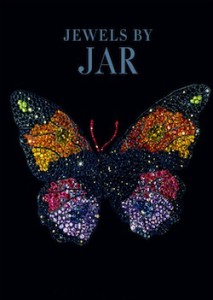
No torches this time. It seems the Met can afford proper lighting. There will, however, be JAR jewelry for sale, just as there was at the Somerset show. (Those aluminum baubles are now worth a pretty penny.)
JAR has created a jewelry collection to be sold exclusively at the Met for the run of the show, including eight pairs of earrings and two watches, priced at $2,000 to $7,500. The catalog for the exhibition (right) is plenty satisfying and might be more in your price range.
As I wrote in my first profile of JAR, his jewelry is so rare and yet so recognizable, wearing it has become the ultimate status symbol for wealthy connoisseurs. A handful of celebrities made millions selling off their JAR jewels at auction, including actress Ellen Barkin in 2006 and socialite Lily Safra last year. Barkin’s sale created such a stir, it inspired a scene in Sex & the City: the Movie.
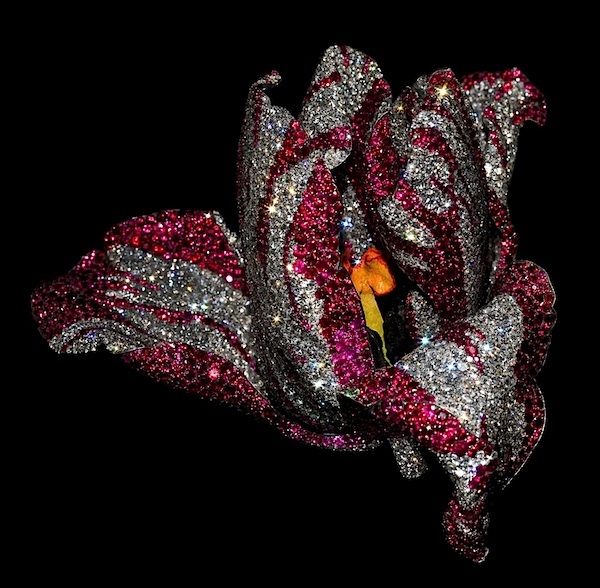
Many have admired JAR jewels from photographs and some of us have tried a few on at auction previews, but the Jewels by JAR exhibition (November 20, 2013 – March 14, 2014) will be the first (and possibly last) time we’ll see 400 actual pieces up close and in one place. That’s because they’re all custom-designed and in private collections. If you’ve ever seen the jewelry of René Lalique up close, you know the finest gems and jewels have to be seen to be believed. It’s not just the three dimensions, it’s the way light reflects off gems and metal.
It’s also the scale. And, in JAR’s case, the cryptic meanings. JAR did not become the darling of millionaires and celebrities for nothing. The man knows how to create visual drama and then personalize it, using the finest materials and craftsmanship. “There’s a lot of mystery to it,” says Met curator Jane Adlin of the jewels on display. “I think the show will also reveal that you don’t get a sense of the scale from photographs.”
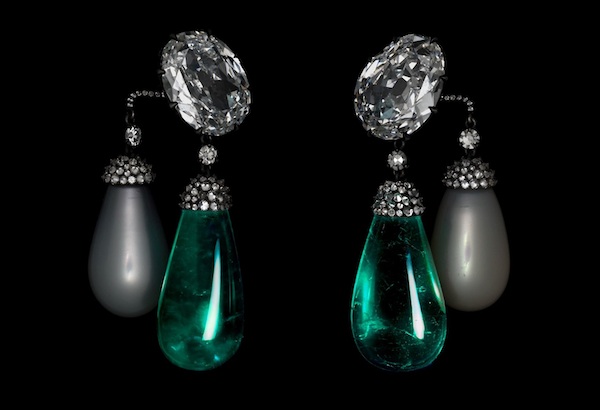
He does work with smaller jewels, she points out, “like his scribble jewelry – much finer, thinner, refined down to its essence almost. But you can’t imagine the scale until you see some of these pieces. The original poppy is enormous – much larger than the image in your head. I think people will be fairly startled.”
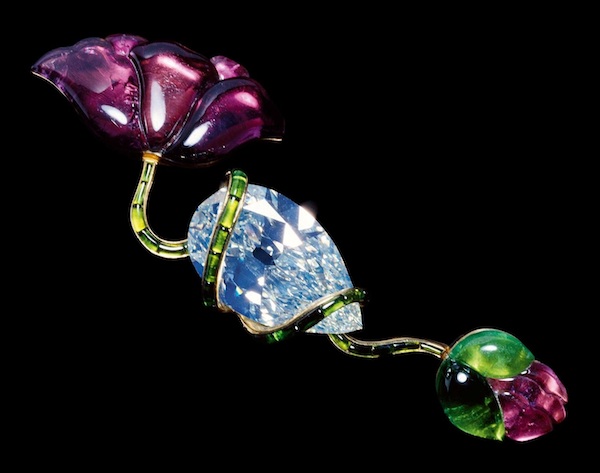
The poppy she refers to is the brooch of carved pink and green tourmalines JAR designed for Lily Safra in 1982, discussed in this post, its stem twisting around a pear-shape diamond. It sold for $1,273,320 at Christie’s Geneva on May 14, 2012 – double the estimate, which is typical for JAR jewels at auction.
But there are some pieces I’ve never seen, that probably disappeared into private collections the minute they were made, like this icy beauty.
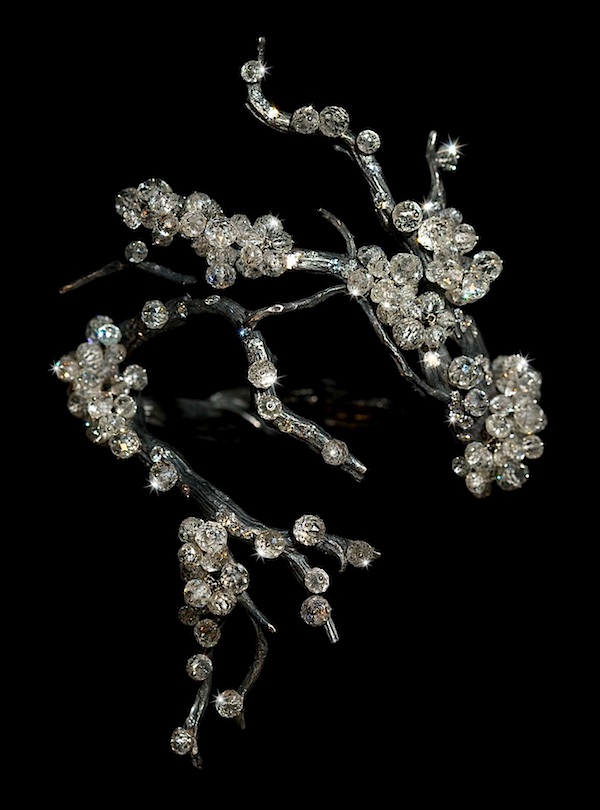
When I spoke to her in September, Adlin had most of the jewelry, loaned from private collectors around the globe, but hadn’t quite figured out how to display it. Yet word of the retrospective was spreading so fast, she was being inundated with queries. “Calls are coming from far and wide,” Adlin said. “People are fascinated.”
Considering JAR produces only 70 to 80 pieces of jewelry in a good year, gathering 400 of his finest was no small feat. But then, this is the Met. While Rosenthal has lived and worked in Paris since he launched his career, he grew up in the Bronx and visited this museum frequently growing up. He also has longstanding relationships with many New York dealers, so this is a fitting location for what may be the showcase of his career.
“It’s a retrospective,” Adlin says. “It’s everything – a really big show.”
To accompany the show, the Met produced a beautiful but compact catalog that shows 50 pieces and opens with an illuminating essay by Adrian Sassoon. “The catalog gives you a taste rather than the whole picture,” Adlin says. The good news: it’s only $28 on Amazon ($40 at the Met for non-members, $36 for members), a steal compared to the $5,000 the Somerset show catalog, long out of print, has been fetching. For fans who can afford the deluxe version, I’ve noticed that catalog is available now at less than $2,000
.
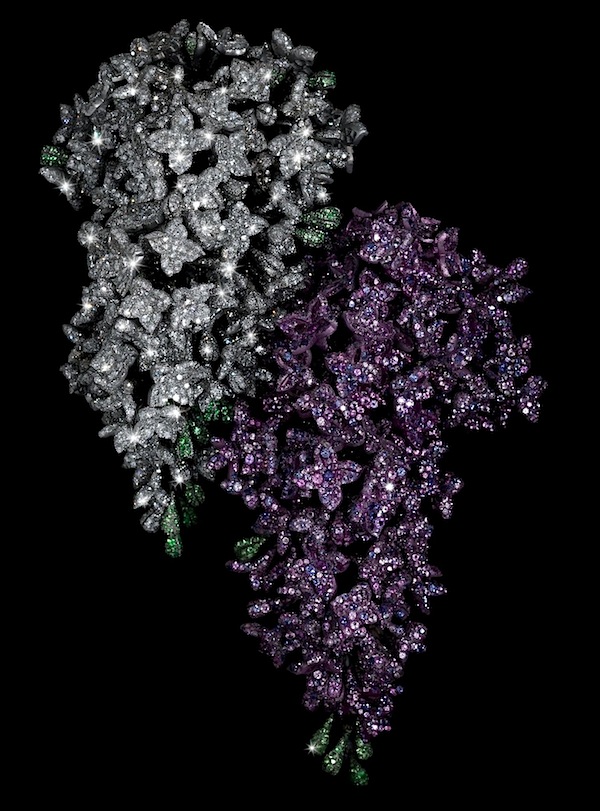
Apparently, prices of the original 2002 catalogs have dropped because Rosenthal is reissuing them “with better pictures, along with a second volume that will be matched with it, showing pieces designed since then,” Adlin says. “People are clamoring for the first edition. Our catalog serves slightly different audience, but with photos that came from Joel, so they’re magnificent.”
In his essay in the new Met catalog, art dealer and author Adrian Sassoon explains, in fascinating detail, the design process behind JAR jewels. A time-consuming collaboration between designer and atelier usually begins with a conversation. “He draws schematically or idealistically: ‘This is my idea.’ Then he talks about it,” Adlin says. “He can only work with people who understand him really well, that get what he gets, his ideas.”
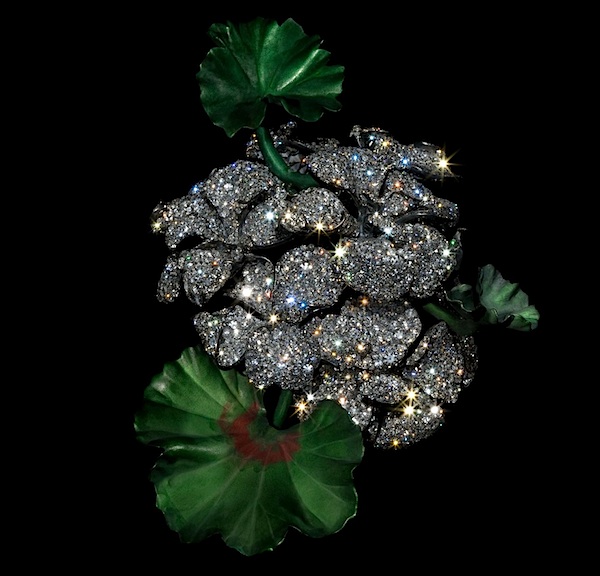
A few years before his own fall from grace, the renown collector/dealer/connoissuer Ralph Esmerian called Rosenthal “the most influential jewelry designer retailer of the late 20th century.”
“Every 15 to 20 years, a retail designer/jeweler comes along who sets a style that the world follows, imitates, and outright copies,” Esmerian told me. That jeweler was Tiffany at the turn of the last century, he said, Cartier in the Deco period, Van Cleef & Arpels in the ’40s ’50s, Harry Winston in the ’50s and 60s, Bulgari in the ’60s and ’70s.
As design meccas, these houses no longer ruled after the 1980s, according to Esmerian and other experts I’ve interviewed. A Bronx-born designer with no formal training began to draw their customers to the tiny shop on the Place Vendome where he and his partner, Pierre Jeannet, worked with a staff of four and a handful of ateliers. Soon, the biggest names in the industry were imitating his designs.
“For more than thirty-five years, JAR pieces have been created without concessions to publicity,” Sassoon writes in the Met catalog. “Rosenthal’s exceptional and novel use of color and sculptural form has led to unintended fame and a position in the history of jewelry, despite JAR objects being only minimally in the public eye.”
For next three months or so, JAR jewels will be very much in the public eye.
All photos courtesy of the Metropolitan Museum of Art
Related posts
JAR: designer jewelry as calling card
JAR in full flower: 18 rare jewels on the block
Lily Safra’s JAR jewels sell for a record $1.5mil
Back on the block: JAR topaz earrings
Related products
(Shopping through affiliate links on this site earns me a small commission but doesn’t cost you any extra.)

